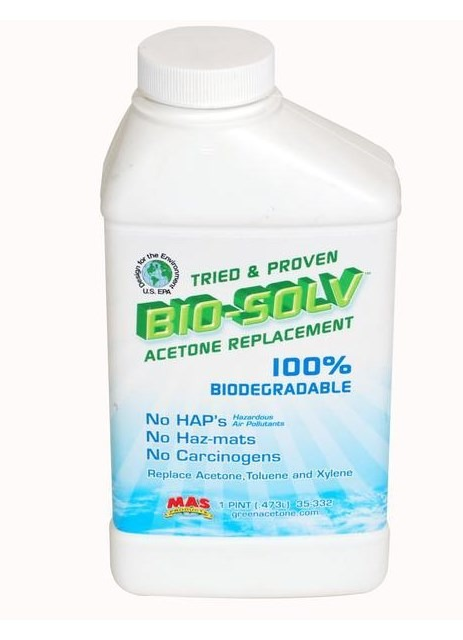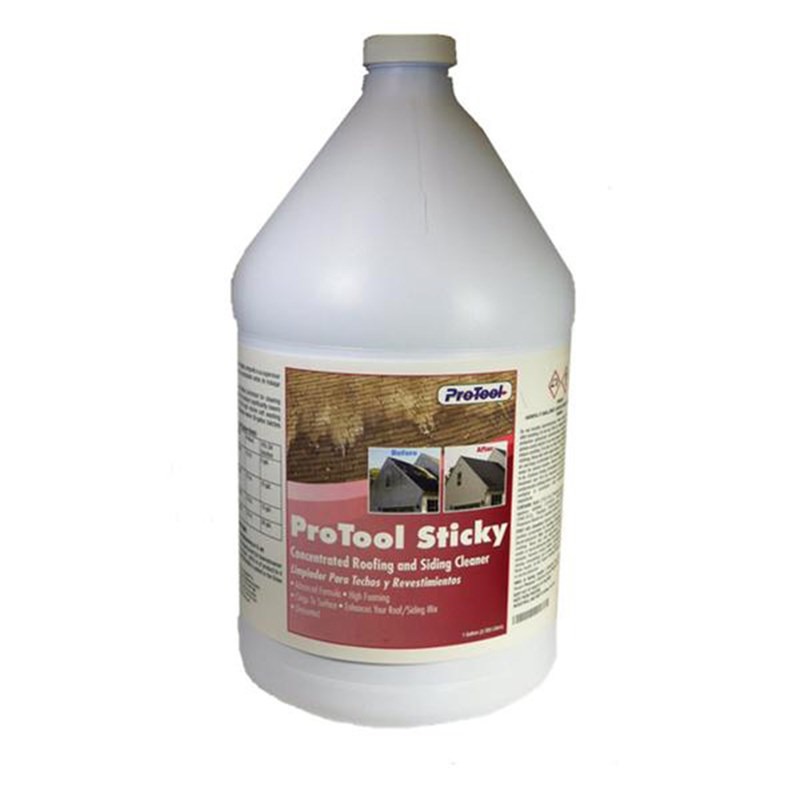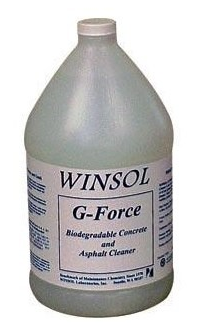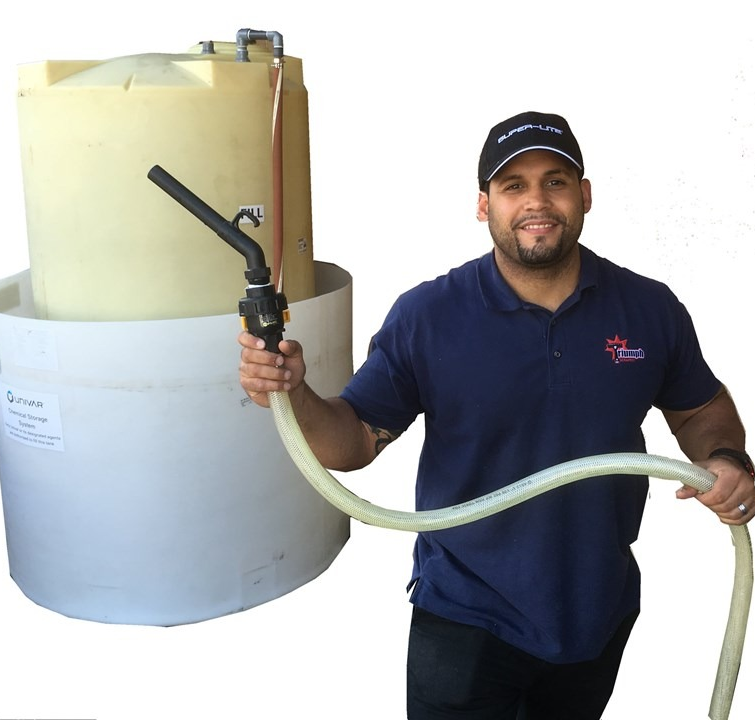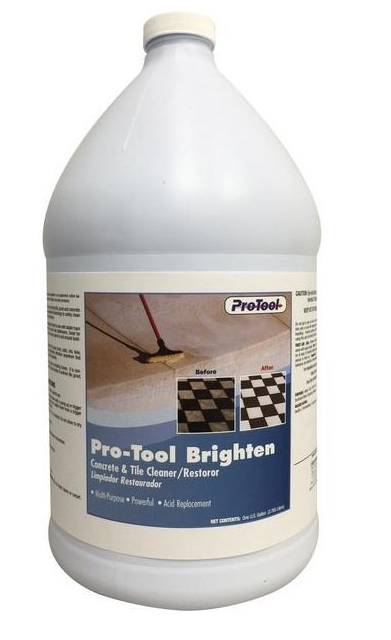How Chemicals Remove Stains
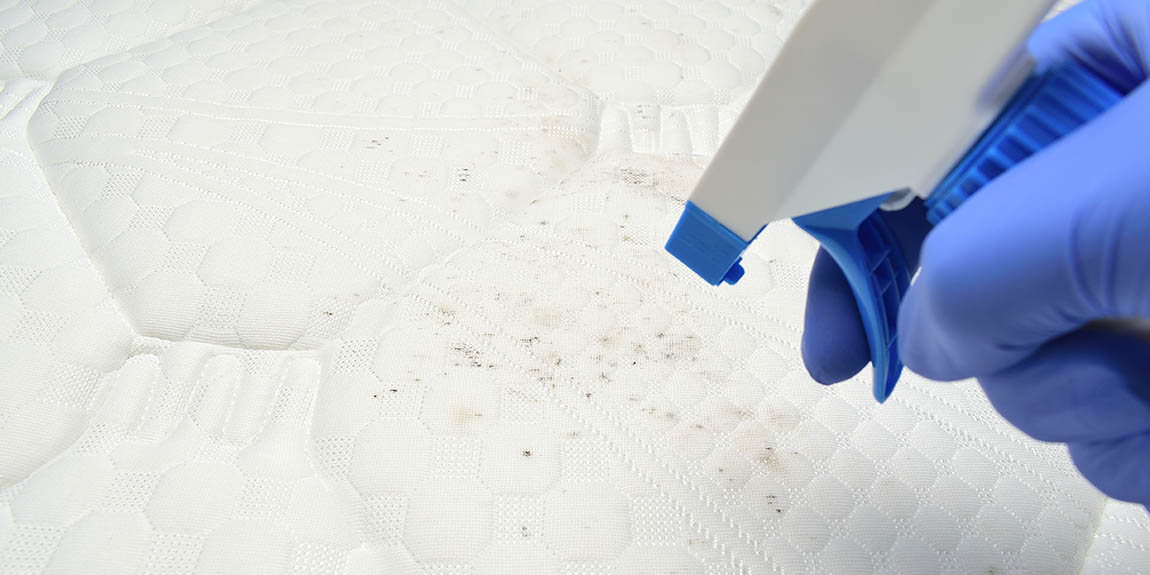
Whether pressure washing, soft washing, or window cleaning, you’re going to run across stains that require the right cleaning chemicals for the job. In general, there are four primary ways that cleaning chemicals remove stains:
1. Dissolving the stain. Cleaning products often contains solvents, which are a type of liquid chemical that dissolves another chemical. A rule of thumb is that “like dissolves like.” This generally means you need to use a solvent that is chemically similar to your stain.
Bio-Solv is a good example of a popular solvent that we carry. Bio-Solv is a tried-and-proven, highly effective green solvent with hundreds of uses. (See Bio-Solv to the Rescue for one example.)2. Emulsifying the stain. In our industry, emulsifiers are generally referred to as surfactants, or surface acting agents. Surfactants work by coating the stain and helping lift it off the surface. Surfactants can be used for both water-based and oil-based stains.
ProTool Sticky is a great example of an emulsifier, i.e., surfactant. ProTool Sticky is used with sodium hypochlorite (SH) -- see #4 below -- and water to allow a better spreading of the solution and a longer dwell time when cleaning mold, dirt, and mildew stains from roofs, house siding, fencing or patio deck.Sticky promotes a powerful cleaning action while requiring only 10 ounces of product in a 50 gallon spray batch.
3. Breaking down the stain. Some stain removers use enzymes and other proteins to break down the stain’s molecules. These enyzmes are proteins made from amino acids and work by digesting fats in stains. Enzymes are considered a “greener” option in many situations. Because they are organic, the enzymes actually digest the stain’s molecules, which helps eliminate odors as well as the stain. These are particularly useful for animal waste related stains, like removing bird feces. Some enzyme-based cleaners also include oxidizers to help remove the color and lighten the stain.
Another enzymatic product example is G-Force Concrete and Asphalt Cleaner. G-Force is a new microbial oil ingester that eats away at stains that have eluded other cleaning efforts. When the food source (i.e., oil) is gone, G-Force is gone too.
4. Hiding the stain. This is where oxidizers like bleach (sodium hypochlorite, or SH) or peroxide come into play. These chemicals lighten, or oxidize stains, so they are not as noticeable. Bleach works by breaking bonds in a cell’s chromophore – i.e., the atoms responsible for color of a compound -- making smaller fragments that cannot absorb light in a way that people can see.
Technically, bleach and peroxide are disinfectants, not cleaners. The CDC defines the difference as follows:
- Cleaning refers to the “removal of germs, dirt, and impurities from surfaces.”
- Disinfecting refers to chemicals to kill germs on surfaces. The process does not necessarily clean dirty surfaces or remove germs.
Adding a surfactant (i.e., emulsifier) like Sticky can help with not only providing longer dwell time for your SH, it also helps you actually clean the surface, as well as disinfect it.
We offer 12.5% sodium hypochlorite that can be pumped into your holding tank or container at our East Rutherford NJ facility.Peroxide is another example of an oxidizer. A good example of a peroxide product we carry is ProTool Brighten, a ready-to-use foaming tile, grout, and concrete cleaner that uses the latest acid replacement technology to safely clean and brighten tile and concrete surfaces. Brighten, is ready to use and applies as a stable foam for us as a cleaner poolside, on hot tubs, in the laundry room and the bathroom. Great for cleaning concrete around and close to the building, inside and out. Use Brighten to remove dirt, soap scum, salts, oils, lime, calcium and iron deposits; particularly effective anywhere that water has caused oxidation or mineral deposits. Brighten is Low PH, has no irritating fumes, and is non-corrosive on skin; used for interior and exterior tile, grout and concrete cleaning. Apply with the ProTool Power Sprayer.


